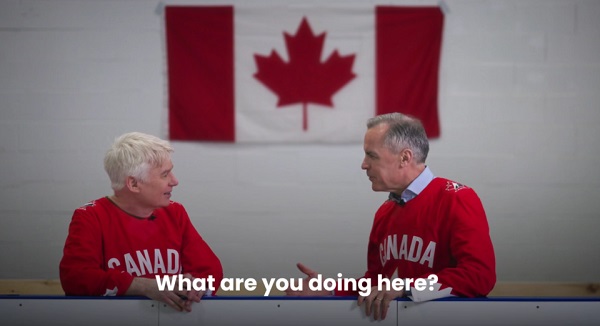International
EU elections turn ‘sharp right’ as immigration woes wreak havoc in Europe
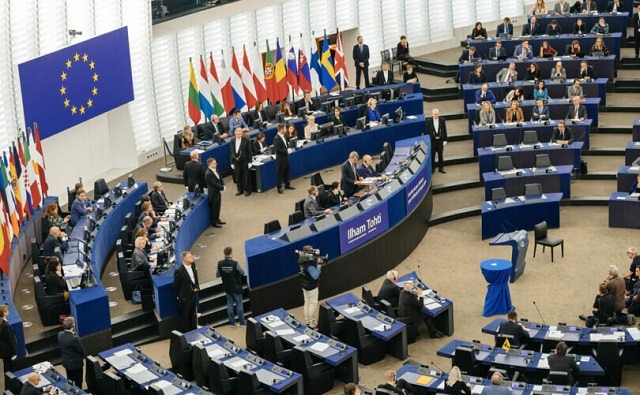
Plenary chamber of the European Parliament, Strasbourg, FranceHadrian/Shutterstock
From LifeSiteNews
By Frank Wright
The recent European Union elections have resulted in significant gains for right wing and nationalist parties across major European countries in a signal move against widespread liberal immigration policies.
As predicted by the European Council on Foreign Relations in January, the EU elections have delivered a “sharp right turn” in the major nations of the European Union.
France saw the biggest gains for population friendly politics, with the right-wing National Rally party (RN) securing up to 33 percent of the vote: more than twice that of President Emmanuel Macron’s party. The map below shows in blue where nationalists won:

This 2022 map below shows the sharpness of the right turn in France in only two years:

Macron has announced a parliamentary election in France, to be held within 30 days.
In addition to the 30 seats won by the RN, led in the EU by Jordan Bardella, the Reconquest party of Marion Marechal took another five seats, leaving nationalists in France with 35 against 13 for the governing coalition. Marechal is the niece of the RN’s National Assembly leader Marine Le Pen.
A full summary of the results at the time of writing is available at Politico.
In Germany, Europe’s most solid anti-globalist party the Alternative for Germany (AfD) came second to the “conservative” Christian Democratic Union of Germany, its 15 seats and 16 percent of the vote putting it ahead of all the parties of the “traffic light” coalition of reds, greens, and yellow liberals. The ruling parties have long threatened to criminalize the AfD, as it continues to rise in the polls.
In Austria, the nationalist Freedom Party of Austria came first with over 25 percent and six seats, beating the “conservative” Austrian People’s Party into second place.
Geert Wilder’s PVV took the most seats in the Netherlands, winning six – with the anti-globalist Farmer Citizen Movement (BBB) winning a further two.
Hard right and nationalist parties came joint first in Belgium, with the Vlaams Belang returning from destruction by liberal lawfare of its immensely successful predecessor, the Vlaams Blok, to secure three seats.
Hungary’s staunchly pro-family and pro-nation ruling party Fidesz took almost 45 percent, its 10 seats edging out the second placed “conservative” Respect and Freedom Party on seven.
No change at the top of the EU
Yet the encouraging results for the reality-based community are tempered by two facts: the “conservative” faction of Ursula von der Leyen remains the largest, and the real power will still be divided among the ruling liberal establishment.
Von der Leyen is seeking a second term in office, and will likely work with red, green, and liberal globalists to get one.
In an early indication of the response to popular politics by the globalist elite, she has recently announced an enormous EU-wide censorship and propaganda effort. Known as the European Democracy Shield, its purpose is to shield the ruling elite she leads from democracy.
Europe must be able to defend itself – against all kinds of attacks.
I will propose a European Democracy Shield.
🛡️To detect disinformation and malign interference
🛡️To remove content, including AI deepfakes
🛡️To make our societies more resilient pic.twitter.com/d455YyWUib
— Ursula von der Leyen (@vonderleyen_epp) May 20, 2024
Real power in the EU, as in all “democracies,” is not in the Parliament – but lies with the permanent government at the top.
The real power is not in Parliament
The EU Parliament, whose new makeup now includes 157 seats for a divided right-nationalist faction, does not set EU policies.
The positions which decide EU policy are those on the European Commission and European Council. These, as before, will be allotted to members of the liberal consensus: the EPP group – led by the current EU Chief Commissioner Von der Leyen – remains the largest group with 186 seats and is “conservative” in name only. With 720 seats in total, 361 seats are required for a majority.
The EPP is expected to continue to collaborate with the reds, greens, and liberals to achieve this.
The liberal left has 135 seats – eleven fewer than the nationalists – but being a single group achieves second place as a result.
Added to this, the 79 seats of the liberals grants the globalist uniparty a majority in the EU Parliament.
Why are the nationalists divided?
The nationalist bloc – Identity and Democracy (ID) – is led by the largest party, the French RN. It suspended the AfD in May, as the French group sought to distance itself from continued attempts to discredit the AfD in the German press.
As a result, the AfD’s 15 seats join the 10 of Hungary’s ruling Fidesz in the non-aligned group. These 25 non-aligned seats for the politics of sanity are buttressed by the nationalist ID group of 58 seats, and the national-conservative ECR group with 73. A nominal total of 157 right-nationalists emerges, when the single seat from the Niki party of Greece is included.
General elections
Calls were made for a general election in France and in Germany following the decisive defeat of the ruling parties in the two major nations of Europe.
The French National Assembly has been dissolved by Macron, with a parliamentary election to follow within 30 days. With no presidential election scheduled until 2027 it is likely that Macron will remain the head of state over a Parliament firmly opposed to his personal platform which has delivered war, mass migration, and mounting left wing street violence.
In an early sign of rising political violence, left wing rioters marauded through Paris, smashing windows and burning cars in Bordeaux, Toulouse, and other French cities following the results of the EU elections in France.
In Germany, the leader of the right-liberal Christian Democratic Union called for elections after his “conservative” party topped the polls, with the AfD in second place. The current Chancellor Olaf Scholz ruled out snap elections, promising instead to crack down on the AfD and propagandize his people into becoming more “modern” and “progressive.”
This was the prescription written for the ruling parties of the elite in the Council on Foreign Relations’ January warning, which said globalist power must be secured by information control:
Progressive policymakers need to start considering the trends that are driving these voting patterns and begin preparing narratives that can cut through them.
With this report in detail from Ireland, narrative control is compounded with another “conspiracy theory” in action: the replacement of the electorate by mass migration driven by war.
Irish elections ‘rigged’? Globalist replacement in action
Ireland has seen the most widespread popular revolt against what Irish natives call the “plantation” of huge volumes of male migrants into their nation.
Yet this popular upsurge was not reflected in local and EU elections, whose results are yet to be fully declared. The talk in Ireland is of migrants bussed to polling stations, and a media blackout on non-mainstream candidates for an Irish Ireland.
Dublin doctor Jane Holland, had this to say: “Imagine a government operated so poorly they had to import an entire nation of new voters because they lost the citizens’ vote.”
Holland sensibly suggested that “Voting should be reserved for citizens only.” Is she representative of a far-right conspiracy theory known as the “Great Replacement”?
Since 2004, non-Irish residents have been permitted to vote in elections in Ireland. An NGO campaigning for increased migrant rights to Irish homes and benefits has been “bussing” migrant voters to polling stations, ensuring they “vote correctly.”
We took thousands of Refugees in Direct Provision Camps to Polling Station this morning to ensure they voted correctly.
The Government should give all of them right to remain in Ireland.#RefugeesWelcome pic.twitter.com/64NpLjrBs8
— Abolish Direct Provision Campaign (@AbolishDirect) June 7, 2024
Both the newspaper which reported this fact above, and the NGO bussing migrants to vote for migrants in elections – are funded by the European Union to do so.
The efforts of this NGO ensured “90 percent of asylum seekers turned out to vote.”
We are really proud of the 90% turnout of asylum seekers to vote. It would be the first time that there is a centre in every county of Ireland.
Fact. Last elections in 2019 there were 62 DP Centres and this year over 350 centres & Aramark Tents
They will vote correctly 🗣️ pic.twitter.com/dX2t4kCup0
— Abolish Direct Provision Campaign (@AbolishDirect) June 7, 2024
They celebrated many victories, including the first Nigerian woman to hold office in Galway.
Congratulations to Helen Ogbu and to Ireland ❤️🇮🇪
'From asylum seeker to councillor' – Helen Ogbu becomes first black woman elected to Galway City Council @jqbilbao https://t.co/RVkC7FkFJN via @NewstalkFM— Razan Ibraheem (رزان) (@RazanIRL) June 9, 2024
Former Irish republican party Sinn Fein, now globalist, has been caught “farming votes from Ukrainians” in Ireland, with the promise of housing and accelerated citizenship in return.
Media ‘lockout’ of non-establishment candidates
Irish people simply do not hear of any alternative, according to critics, thanks to media censorship by omission.
“This is very clear after these elections. The national media worked in a deeply unethical manner to shield the general public from conservative perspectives in particular.”
So said independent journalist Eoin Lenihan, explaining, “There was a blanket lockout of non-leftist and non-establishment parties and independents.”
Lenihan’s statement on X (formerly Twitter) referenced another Irish user’s claim that “Irish journalists working for national media are toxic and a threat to democracy in Ireland. There was a blanket lockout of non-leftist and non-establishment parties and Independents.”
Despite regime efforts to suppress native Irish politics, four nationalists were elected to council positions in Dublin. Pro-life Patrick Quinlan won for the National Party, and Catholic Gavin Pepper is one “working class ordinary Irishman” who managed to break through the “lockout” to win a local council seat in Dublin.
“We’re up against the media” he said in his victory speech, “who don’t let us have a fair say.”
Attempted murder of Catholic nationalist
Another breakthrough came with the victory of pro-life Catholic Malachy Steenson, also in Dublin. Steenson, described as the “Plantation resistance leader,” recently addressed a crowd of 15,000 in a mass demonstration against the “plantation” of migrants into Ireland by its globalist government.
Councillor elect Malachy Steenson addresses a crowd of 15,000 people in Dublin recently. pic.twitter.com/lthQbenGb6
— MichaeloKeeffe (@Mick_O_Keeffe) June 10, 2024
The Irish nationalist was attacked in his office last month by an “antifascist thug” who had arrived to kill him. Having announced his intention to assassinate Steenson to Irish police, he was followed to Steenson’s office, where he was arrested whilst attempting to carry out his threat.
MEP candidate Malachy Steenson give an update after a far left lunatic showed up to his office and wanted to kill him. #IrelandBelongsToTheIrish pic.twitter.com/Ve0VV0HOrh
— Toby 🇮🇪 (@ThoughtsToby) May 15, 2024
Steenson is a strong critic of Israel’s actions in Gaza, and on his election denounced the Irish state broadcaster RTE as a “government propaganda organization.”
Steenson’s message was simple, stating that with his victory, “The revolution has begun.”
National protest leader Malachy Steenson speaks to RTE after his election in Dublin –
"The revolution has begun". pic.twitter.com/dIKTL2RHzv
— MichaeloKeeffe (@Mick_O_Keeffe) June 9, 2024
The view from Russia
With the mainstream media a component in the consolidation of globalist elite power, the perspective from a so-called enemy nation is perhaps the most sincere appraisal of the European situation.
When asked about the election results – and why EU policies will not change despite them – Chargé d’Affaires of the Russian Mission to the EU Kirill Logvinov said this on June 10 in an interview with Russian news outlet RIA:
The main reason is that protest sentiments have been ignored for a long time. The attempted violation of rights and freedoms during the pandemic, the failed migration policy, rising inflation, the deteriorating socio-economic situation, the urge to equate pro-European and pro-Ukrainian interests – the public grievances piled up and sooner or later had to find a ‘way out.’
And they found it in the European elections.
It is startling to see how the Russians view Europe: a managed democracy which is radicalizing its own populations against itself. Continuing, Logvinov stated:
In a number of countries, voters have virtually passed a vote of no confidence in the parties in power. Contrary to the rules of political life, however, ‘flawed’ national governments are not obliged to learn lessons immediately, which could lead to further radicalization of society.
The Russian diplomat concluded that the EU system will simply neutralize the will of its people:
Despite the voters’ simple demand for attention to their vital interests, the centrist majority will do its utmost to ‘dilute’ views and approaches that go against the political mainstream.
This is all the easier when MEPs are essentially unaccountable to their own electorate.
With a locked down media and the plantation of an imported voting bloc, Ireland is one nation to watch to see how long the politics of elite repression can continue under the European Union.
International
“The Largest Funder of Al-Shabaab Is the Minnesota Taxpayer”

How state welfare funds ended up in the hands of a terror group
Minnesota is drowning in fraud. Billions in taxpayer dollars have been stolen during the administration of Governor Tim Walz alone. Democratic state officials, overseeing one of the most generous welfare regimes in the country, are asleep at the switch. And the media, duty-bound by progressive pieties, refuse to connect the dots.
In many cases, the fraud has allegedly been perpetrated by members of Minnesota’s sizeable Somali community. Federal counterterrorism sources confirm that millions of dollars in stolen funds have been sent back to Somalia, where they ultimately landed in the hands of the terror group Al-Shabaab. As one confidential source put it: “The largest funder of Al-Shabaab is the Minnesota taxpayer.”
Our investigation shows what happens when a tribal mindset meets a bleeding-heart bureaucracy, when imported clan loyalties collide with a political class too timid to offend, and when accusations of racism are cynically deployed to shield criminal behavior. The predictable result is graft, with taxpayers left to foot the bill.
If you were to design a welfare program to facilitate fraud, it would probably look a lot like Minnesota’s Medicaid Housing Stabilization Services program. The HSS program, the first of its kind in the US, was launched with a noble goal: to help seniors, addicts, the disabled, and the mentally ill secure housing. It was designed with “low barriers to entry” and “minimal requirements for reimbursement.” Nonetheless, before the program went live in 2020, officials pegged its annual estimated price tag at $2.6 million.
Costs quickly spiraled out of control. In 2021, the program paid out more than $21 million in claims. In the following years, annual costs shot up to $42 million, then $74 million, then $104 million. During the first six months of 2025, payouts totaled $61 million.
On August 1, Minnesota’s Department of Human Services moved to scrap the HSS program, noting that payment to 77 housing-stabilization providers had been terminated this year due to “credible allegations of fraud.” Joe Thompson, then the Acting U.S. Attorney for the District of Minnesota, went even further, stating that the “vast majority” of the HSS program was fraudulent.
On September 18, Thompson announced criminal indictments for HSS fraud against Moktar Hassan Aden, Mustafa Dayib Ali, Khalid Ahmed Dayib, Abdifitah Mohamud Mohamed, Christopher Adesoji Falade, Emmanuel Oluwademilade Falade, Asad Ahmed Adow, and Anwar Ahmed Adow—six of whom, according a U.S. Attorney’s Office spokesperson, are members of Minnesota’s Somali community. Thompson made clear that this is just the first round of charges for HSS fraud that his office will be prosecuting.
“Most of these cases, unlike a lot of Medicare fraud and Medicaid fraud cases nationally, aren’t just overbilling,” Thompson said at a press conference announcing the indictments. “These are often just purely fictitious companies solely created to defraud the system, and that’s unique in the extent to which we have that here in Minnesota.”
Thompson said many firms enrolled in the program “operated out of dilapidated storefronts or rundown office buildings.” The perpetrators often targeted people recently released from rehab, signing them up for Medicaid services they had no intention of providing. He noted many owners of companies engaged in HSS fraud had “other companies through which they billed other Medicaid programs, such as the EIDBI autism program, the . . . Adult Rehabilitative Mental Health Services program, the . . . Integrated Community Support program, the Community Access for Disability Inclusion . . . program, PCA services, and other Medicaid-waivered services.”
“What we see are schemes stacked upon schemes, draining resources meant for those in need. It feels never ending,” Thompson said. “I have spent my career as a fraud prosecutor and the depth of the fraud in Minnesota takes my breath away.”
On September 18, the same day that the HSS fraud charges were announced, the U.S. Attorney’s Office reported that a man named Abdullahe Nur Jesow had become the 56th defendant to plead guilty in the $250 million Feeding Our Future fraud scheme.
Founded in 2016, Feeding Our Future was a small Minnesota nonprofit that sponsored daycares and after-school programs to enroll in the Federal Child Nutrition Program. The organizations that Feeding Our Future sponsored were primarily owned and operated by members of Minnesota’s Somali community, according to two former state officials with connections to law enforcement.
In 2019, Feeding Our Future received $3.4 million in federal funding disbursed by the state. In the months after the Covid-19 pandemic began, however, the nonprofit rapidly increased its number of sponsored sites. Using fake meal counts, doctored attendance records, and fabricated invoices, the perpetrators of the fraud ring claimed to be serving thousands of meals a day, seven days a week, to underprivileged children. In 2021, Feeding Our Future received nearly $200 million in funding.
In reality, the money was being used to fund lavish lifestyles, purchase luxury vehicles, and buy real estate in the United States, Turkey, and Kenya. In 2020, Minnesota officials raised concerns about the nonprofit’s rapid expansion. In response, the group filed a lawsuit alleging racial discrimination related to outstanding site applications, noting that Feeding Our Future “caters to . . . foreign nationals.”
“That’s the standard operating playbook for that cohort: when in doubt, claim racism, claim bias,” says David Gaither, a former Minnesota state senator and a nonprofit leader. “Even if the facts don’t point to that, it allows for many folks in the middle, or on the center-Left, to stay silent.”
Gaither believes the mainstream media, alongside Minnesota’s Democratic establishment, have long turned a blind eye to fraud within the Somali community. This, in turn, allowed the problem to metastasize. “The media does not want to put a light on this,” Gaither said. “And if you’re a politician, it’s a significant disadvantage for you to alienate the Somali community. If you don’t win the Somali community, you can’t win Minneapolis. And if you don’t win Minneapolis, you can’t win the state. End of story.”
The fraudsters have leveraged their growing political influence to cultivate close ties with Minnesota’s elected officials. Several individuals involved in the Feeding Our Future scheme donated to, or appeared publicly with, Ilhan Omar, the Somali-born congresswoman from Minneapolis. Omar’s deputy district director, Ali Isse, advocated on behalf of Feeding Our Future. Omar Fateh, a former state senator who recently ran for Minneapolis mayor, lobbied Governor Tim Walz in support of the program. And one of the accused, Abdi Nur Salah, served as a senior aide to Minneapolis mayor Jacob Frey.
Just days later, on September 24, U.S. Attorney Joseph Thompson announced his office’s first indictment in yet another fraud case. This time, the scheme involved federally funded autism services for children.
The accused is a woman named Asha Farhan Hassan, a member of Minnesota’s Somali community, who has also been charged in the Feeding Our Future scam. She’s alleged to have played a role in a $14 million fraud scheme perpetrated against Minnesota’s Early Intensive Developmental and Behavioral Intervention program.
Hassan and her co-conspirators “approached parents in the Somali community” and recruited their children into autism therapy services. It didn’t matter, prosecutors suggested, if a child did not have an autism diagnosis: Hassan would facilitate a fraudulent one.
In a press release announcing the indictment, the U.S. Attorney’s Office made clear that the alleged autism fraud scheme extended to a wide network of people. “To drive up enrollment, Hassan and her partners paid monthly cash kickback payments to the parents of children who enrolled,” the release reads. “These kickback payments ranged from approximately $300 to $1500 per month, per child. The amount of these payments was contingent on the services DHS authorized a child to receive—the higher the authorization amount, the higher the kickback. Often, parents threatened to leave . . . and take their children to other autism centers if they did not get paid higher kickbacks.”
Much like with the HSS program, autism claims to Medicaid in Minnesota have skyrocketed in recent years—from $3 million in 2018 to $54 million in 2019, $77 million in 2020, $183 million 2021, $279 million in 2022, and $399 million in 2023. Meantime, the number of autism providers in the state spiked from 41 to 328 over the same period, with many in the Somali community establishing their own autism treatment centers, citing the need for “culturally appropriate programming.” By the time the fraud scheme was exposed, one in 16 Somali four-year-olds in the state had reportedly been diagnosed with autism—a rate more than triple the state average.
“This is not an isolated scheme,” Thompson, the U.S. attorney, said in a press release. “From Feeding Our Future to Housing Stabilization Services and now Autism Services, these massive fraud schemes form a web that has stolen billions of dollars in taxpayer money. Each case we bring exposes another strand of this network.”
What Thompson arguably hinted at, but left unsaid, should be obvious: this “network” of “fraud schemes,” which “form a web” that has stolen “billions of dollars in taxpayer money,” involved many members of Minnesota’s Somali community. The Feeding Our Future, HSS, and autism-services cases are far from the only examples. At least 28 fraud scandals have surfaced since Walz was elected governor in 2019. Most of the large-scale fraud rings, according to two former FBI officials who spoke with City Journal, have been perpetrated by members of the Somali community.
Kayesh Magan, a Somali-American who had worked as a fraud investigator at the Minnesota Attorney General’s Office and declined an interview request, identified the problem last year: “We must grapple with something that is uncomfortable and true: Nearly all of the defendants in the cases I’ve listed are from my community. The Somali community.”
Perhaps the most surprising aspect of the Somalia fraud story is the scale, with total costs running into the billions of taxpayer dollars. That raises the question: What happened to all that money?
The Somali fraud rings have sent huge sums in remittances, or money transfers, from Minnesota to Somalia. According to reports, an estimated 40 percent of households in Somalia get remittances from abroad. In 2023 alone, the Somali diaspora sent back $1.7 billion—more than the Somali government’s budget for that year.
Our investigation reveals, for the first time, that some of this money has been directed to an even more troubling destination: the al-Qaida-linked Islamic terror group Al-Shabaab. According to multiple law-enforcement sources, Minnesota’s Somali community has sent untold millions through a network of “hawalas,” informal clan-based money-traders, that have wound up in the coffers of Al-Shabaab.
According to Glenn Kerns, a retired Seattle Police Department detective who spent 14 years on a federal Joint Terrorism Task Force (JTTF), the Somalis ran a sophisticated money network, spanning from Seattle to Minneapolis, and were routing significant amounts of cash on commercial flights from the Seattle airport to the hawala networks in Somalia. One of these networks, Kerns discovered, sent $20 million abroad in a single year. “The amount of money was staggering,” Kerns said.
Kerns’s investigation eventually expanded to Minnesota, where he realized the same thing was happening. “I worked on it for five years,” Kerns said. “We had sources going into the hawalas to send money. I went down to [Minnesota] and pulled all of their records and, well shit, all these Somalis sending out money are on DHS benefits. How does that make sense? We had good sources tell us: this is welfare fraud.”
Kerns then investigated the hawalas in Somalia that were receiving the money transfers. He determined, primarily through human sources, that significant funds were being sent from America to Al-Shabaab networks in Somalia. Whether the money was intended for Al-Shabaab or not, Kerns said, they were taking a cut.
A second former official, who worked on the Minneapolis JTTF, confirms the story’s general structure. This former official, who requested to remain anonymous, worked on two terrorism cases that intersected with Minnesota’s Somali community and has studied the flow of funds from Minnesota to Somalia.
“Every scrap of economic activity, in the Twin Cities, in America, throughout Western Europe, anywhere Somalis are concentrated, every cent that is sent back to Somalia benefits Al-Shabaab in some way,” the former official said. “For every dollar that is transferred from the Twin Cities back to Somalia, Al-Shabaab is . . . taking a cut of it.”
A third source, who spoke on condition of anonymity, described the close links between the Somali-American community in Minnesota and Islamic terror groups abroad. Ten years ago, the source was recruited as an “independent contractor” for a three-letter agency investigation into the “Minnesota men” who had joined, or attempted to join, ISIS. That year, a Homeland Security task force report found that Minnesota led the nation in the number of Americans who had joined, or attempted to join, ISIS. Of the 58 Americans who had done so, nearly half came from Minnesota.
Scott Johnson, who has covered these and related stories for years, attended several of those men’s trials, reporting on them for City Journal. He noted that the Minnesota men “gave the outward appearance of American assimilation”—including being “sophisticated users of social-welfare benefits.”
The relationship is ongoing. “This is a third-rail conversation, but the largest funder of Al-Shabaab is the Minnesota taxpayer,” the third source said. “There is an issue here that is real, and if there is ever an event that is traceable back to these funds, or to people from this area, then this situation will take on a whole new set of optics.”
Welfare fraud is likely to become a major issue in Minnesota’s 2026 elections. Governor Tim Walz, now seeking a third term, has presided over a litany of scandals and faces Republican Kristin Robbins, who has made fraud prevention central to her campaign.
Gaither, the former state senator, said “political blowback is brewing” in the state and that, as more information emerges from ongoing investigations, “it’s a real rough place to be if you’re the current administration.” He added that if you talk to law-enforcement officials and others close to the probes, “they will tell you off the record that we aren’t even close to being halfway there” in understanding the true scale of the fraud.
The first step to solving a problem is acknowledging it. By extension, that means recognizing the problem’s true source. So far, Minnesota’s governing class and its media establishment have failed to take that basic step. Minnesotans will have to confront the uncomfortable but unavoidable reality: members of the Somali community have played a central role in the massive fraud now engulfing the North Star State.
 |
A guest post by
|
Subscribe to Christopher F. Rufo.
For the full experience, upgrade your subscription.
Business
US Supreme Court may end ‘emergency’ tariffs, but that won’t stop the President
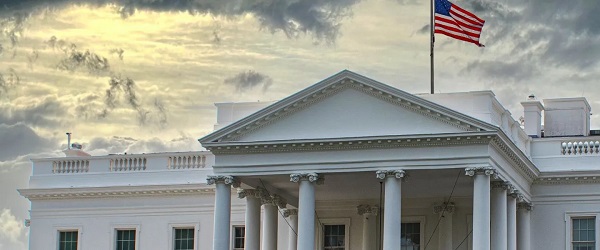
From the Fraser Institute
By Scott Lincicome
The U.S. Supreme Court will soon decide the fate of the global tariffs President Donald J. Trump has imposed under the International Emergency Powers Act (IEEPA). A court decision invalidating the tariffs is widely expected—hovering around 75 per cent on various betting markets—and would be welcome news for American importers, the United States economy and the rule of law. Even without IEEPA, however, other U.S. laws all but ensure that much higher tariffs will remain the norm. Realizing that protection will just take a little longer and, perhaps, be a little more predictable.
As my Cato Institute colleague Clark Packard and I wrote last year, the Constitution grants Congress the power to impose tariffs, but the legislative branch during the 20th century delegated much of that authority to the president under the assumption that he would be the least likely to abuse it. Thus, U.S. trade law is today littered with provisions granting the president broad powers to impose tariffs for various reasons. No IEEPA needed.
This includes laws that Trump has already invoked. Today, for example, we have “Section 301” tariffs of up to 25 per cent on around half of all Chinese imports, due to alleged “unfair trade” practices by Beijing. We also have global “Section 232” tariffs of up to 50 per cent on imports of steel and aluminum, automotive goods, heavy-duty trucks, copper and wood products—each imposed on the grounds that these goods threaten U.S. national security. The Trump administration also has created a process whereby “derivative” products made from goods subject to Section 232 tariffs will be covered by those same tariffs. Several other Section 232 investigations—on semiconductors, pharmaceuticals, critical minerals, commercial aircraft, and more—were also initiated earlier this year, setting the stage for more U.S. tariffs in the weeks ahead.
Trump administration officials admit that they’ve been studying these and other laws as fallback options if the Supreme Court invalidates the IEEPA tariffs. Their toolkit reportedly includes completing the actions above, initiating new investigations under Section 301 (targeting specific countries) and Section 232 (targeting certain products), and imposing tariffs under other laws that have not yet been invoked. Most notably, there’s strong administration interest in Section 122 of the Trade Act of 1974, which empowers the president to address “large and serious” balance-of-payments deficits via global tariffs of up to 15 per cent for no more than 150 days (after which Congress must act to continue the tariffs). The administration might also consider Section 338 of the Tariff Act of 1930—a short and ambiguous law that authorizes the president to impose tariffs of up to 50 per cent on imports from countries that have “discriminated” against U.S. commerce—but this is riskier because the law may have been superseded by Section 301.
We should expect the administration to move quickly to use these measures to reverse engineer Trump’s global tariff regime under IEEPA. The main difference would be in how he does so. IEEPA was essentially a tariff switch in the Oval Office that could be flipped on and off instantly, creating massive uncertainty for businesses, foreign governments and the U.S. economy. The alternative authorities, by contrast, all have substantive and procedural guardrails that limit their size and scope, or, at the very least, give American and foreign companies time to prepare for forthcoming tariffs (or lobby against them).
Section 301, for example, requires an investigation of a foreign country’s trade and economic policies—cases that typically take nine months and involve public hearings and formal findings. Section 232 requires an investigation into and a report on whether imports threaten national security—actions that also typically take months. Section 122 has fewer procedures, but its limited duration and 15 per cent cap make it far less dangerous than IEEPA, under which Trump has repeatedly threatened tariffs of 100 per cent or more.
Of course, “procedural guardrails” is a relative term for an administration that has already stretched Section 232’s “national security” rationale to cover bathroom vanities. The courts also have largely rubber-stamped the administration’s previous moves under Section 232 and Section 301—a big reason why we should expect the Trump administration’s tariff “Plan B” to feature them.
Thus, a court ruling against the IEEPA tariffs would be an important victory for constitutional governance and would eliminate the most destabilizing element of Trump’s tariff regime. But until the U.S. Congress reclaims some of its constitutional authority over U.S. trade policy, high and costly tariffs will remain.
-
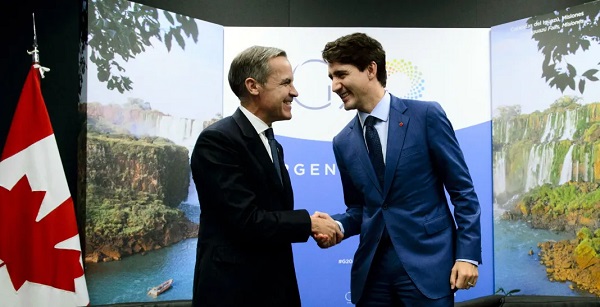
 Carbon Tax2 days ago
Carbon Tax2 days agoCarney fails to undo Trudeau’s devastating energy policies
-

 Business1 day ago
Business1 day agoBudget 2025: Ottawa Fakes a Pivot and Still Spends Like Trudeau
-

 armed forces2 days ago
armed forces2 days agoCanada At Risk Of Losing Control Of Its Northern Territories
-

 Health1 day ago
Health1 day agoTens of thousands are dying on waiting lists following decades of media reluctance to debate healthcare
-
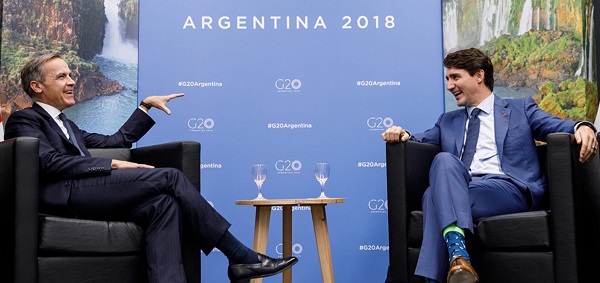
 International2 days ago
International2 days agoCanada’s lost decade in foreign policy
-

 Opinion1 day ago
Opinion1 day agoLandmark 2025 Study Says Near-Death Experiences Can’t Be Explained Away
-

 International4 hours ago
International4 hours ago“The Largest Funder of Al-Shabaab Is the Minnesota Taxpayer”
-

 Focal Points1 day ago
Focal Points1 day agoSTUDY: TikTok, Instagram, and YouTube Shorts Induce Measurable “Brain Rot”





